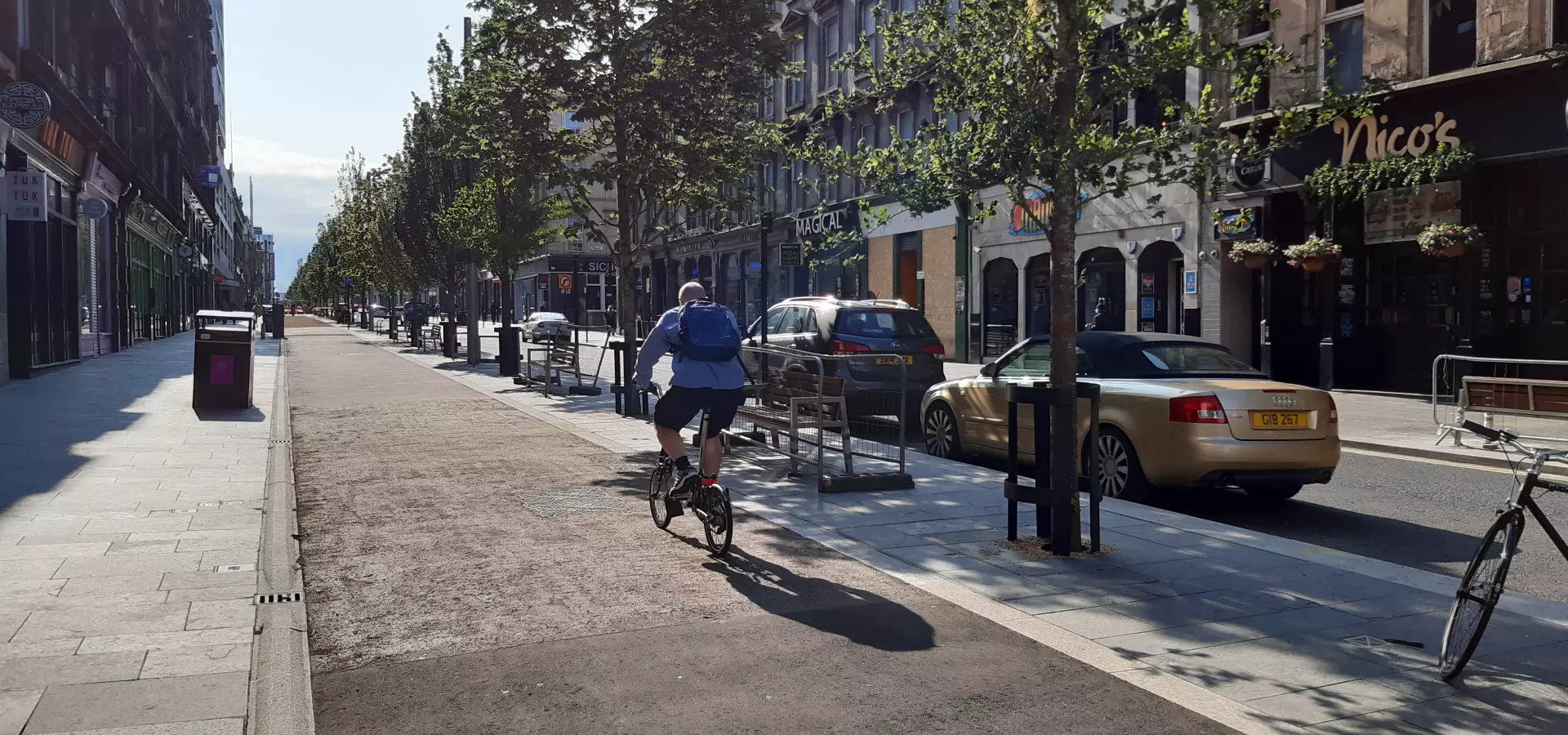
New report on how the pandemic has impacted on transport choices in Scotland
The report, Transport use, health and health inequalities: The impact of measures to reduce the spread of COVID-19, was produced by a multi-agency group established by Public Health Scotland (PHS) to consider the impact of COVID-19 on travel and transport choices.
Using the best data and evidence we have available currently, the paper describes how transport use has changed since lockdown on 23 March 2020 and through the spring and summer period to the beginning of September 2020, when Scotland was in phase 3 of easing of restrictions.
COVID-19 has had, and will continue to have, a significant impact on the number of trips people make and how (and if) people go to work and education, travel to access goods and services and connect socially.
Most significantly, there has been a large and continued reduction in public transport journeys and although car journeys also reduced initially, they rose steadily between April and August. Walking and cycling increased during lockdown and into phase 1, particularly for leisure and exercise. During phases 2 and 3 walking and cycling journeys reduced but cycling levels appear to have remained higher than during a similar period last year.
The report examines the implications of these trends. Reduced capacity and use of public transport is likely to limit the transport options and add financial strain for people without access to a car, people on low incomes, older people, disabled people, people with health problems and young people.
Alternatives to using public transport have both positive and negative health effects on health. Increased walking and cycling would bring health benefits to individuals and communities, but an increase in car traffic would have many negative health and environmental effects for individuals and for wider society.
The authors point out that when restrictions are further relaxed, the number of people travelling for work, education, services and leisure will increase, while the requirement to maintain physical distancing will remain. During this transition actions will be needed to limit increases in car traffic, to support walking, wheeling and cycling and to protect the long-term viability of public transport.
Specifically, the report recommends that transport decision-making at national and local level aligns with and supports the sustainable transport hierarchy and that prioritised actions should aim to:
- protect the long-term sustainability of public or community transport services through, for example, improving accessibility, affordability, availability and appropriateness, and ensuring greater integration of transport services and ticketing to facilitate multi-modal journeys
- limit increases in private car travel and reduce the adverse impacts of motor traffic on health through, for example, the use of low-emission zones and demand management systems (for example bus gates, on-street parking restrictions, workplace parking levies)
- support active travel through, for example, the provision of cycling and pedestrian infrastructure and ensuring that it links into public transport nodes and systems.
Access the report (PDF) and accompanying briefing (PDF).
The Social Systems Recovery Transport Partnership group, which produced this report, is continuing its work and will be considering evidence for, and making recommendations about, transport related policies and interventions that are effective in improving health and equality outcomes.
Previous
Challenge Poverty Week 2020
Back to